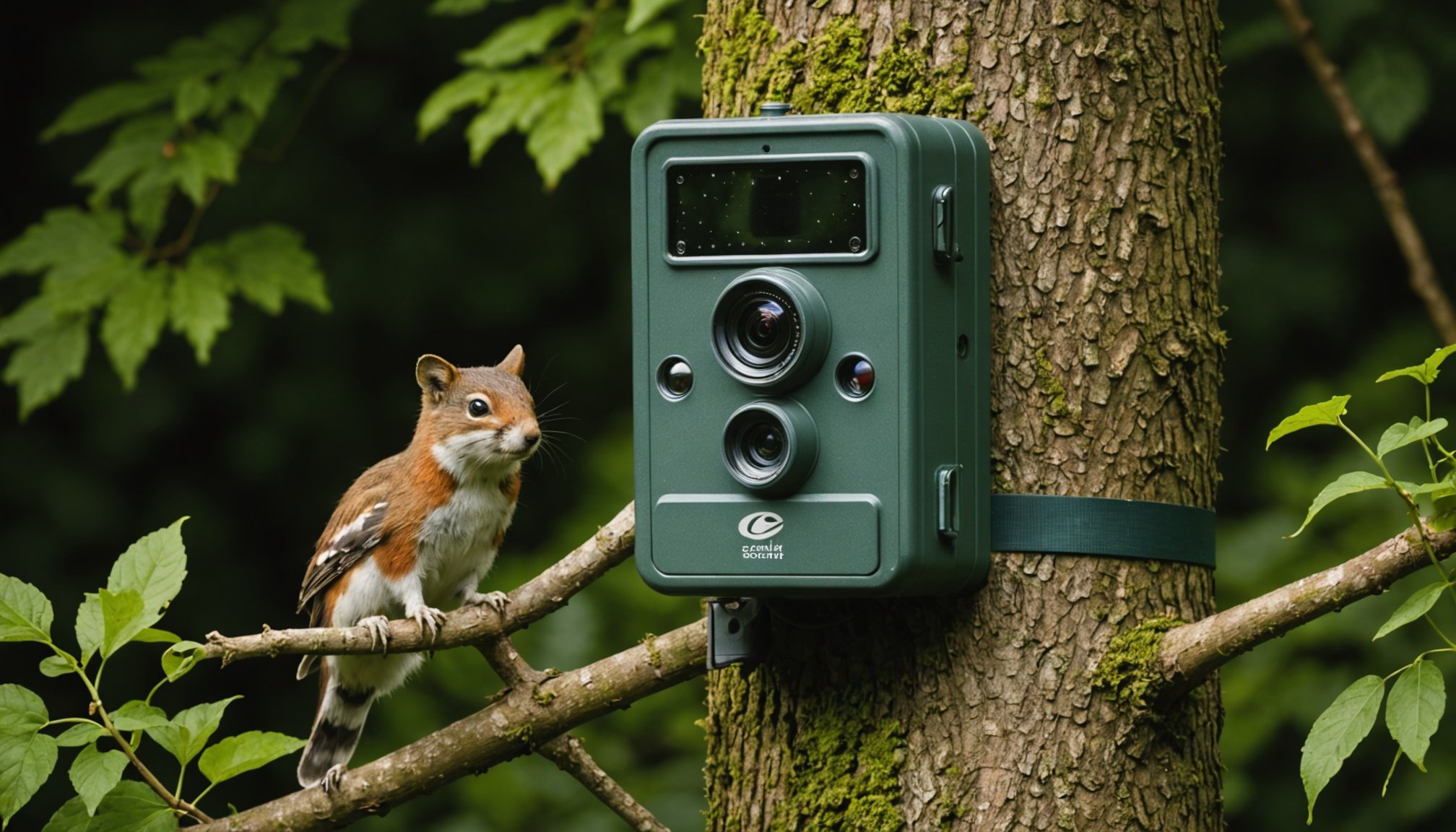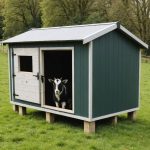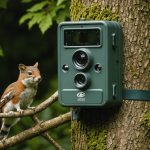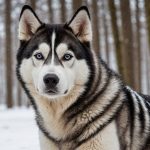Best Wildlife Cameras for Nocturnal Observation
Observing nocturnal animals in UK gardens can be quite the rewarding experience, made simpler with the right wildlife cameras. These devices are increasingly popular among nature enthusiasts keen to capture the elusive behaviours of creatures that roam under the cover of darkness.
Top Models Suited for Nocturnal Observations
When choosing a wildlife camera for nocturnal use, several models stand out for their superior night vision and reliability. The Bushnell Core DS is favoured for its excellent low-light capabilities, capturing clear images even on starless nights. Another strong contender is the Browning Recon Force Advantage, which is lauded for its high-resolution video quality. These cameras are designed to withstand the varying UK weather conditions while seamlessly capturing secretive wildlife moments.
In the same genre : Designing a safe and charming outdoor retreat for pygmy goats in the scenic welsh countryside
Key Specifications Enhancing Night Vision
For effective nocturnal observation, focus on cameras offering infrared night vision, ensuring they have a high number of IR LEDs for optimal illumination. A fast trigger speed and high motion detection range are also crucial, as they enhance the probability of capturing swift, nocturnal animals.
User Experience and Reviews
Users report that these wildlife cameras are easy to set up and provide dependable performance over extended periods. Many emphasise the joy of observing animals in their natural habitat, with the captured footage offering incredible insight into nocturnal life in UK gardens.
In parallel : Can norwich terriers thrive as perfect apartment pets in vibrant manchester?
Key Features to Consider
In the realm of wildlife photography, the integration of night vision technology is essential for capturing clear images in dimly lit environments. Unlike standard cameras, those equipped with night vision can detect and amplify minimal light. This feature ensures that photographers won’t miss any nocturnal activities, enabling them to shoot crisp visuals even when natural light is limited.
Motion detection plays a pivotal role in capturing the perfect shot. It allows cameras to automatically trigger upon detecting movement. This functionality not only saves storage by recording only relevant footage, but also captures spontaneous animal behavior that might otherwise be missed by manual photography. It’s like having an extra pair of vigilant eyes, ensuring that nothing goes unnoticed.
Despite the advanced technology, ease of use remains a crucial factor. Cameras boasting intuitive interfaces and streamlined settings contribute greatly to a seamless photography experience. As the user is typically outdoors, navigating through complicated menus is undesirable. Features such as straightforward setup and simple operation controls enhance user experience.
- Significant benefits of night vision include better detection in low-light conditions.
- Motion detection helps in precise and timely captures.
- A focus on ease of use can drastically improve overall satisfaction for photographers.
Comparison of Top Models
When venturing into the world of camera purchases, understanding the feature analysis and pricing of top models is crucial. Let’s delve into specific comparisons to aid your decision-making process.
Model A vs. Model B
In the battle of Model A against Model B, both cameras offer unique attributes that cater to different users. Model A excels with its high-resolution sensor, delivering exceptional image quality suited for professional photography scenarios. On the other hand, Model B showcases a robust low-light performance, making it ideal for evening or indoor shoots.
When considering the camera comparison for video capabilities, Model A provides advanced options such as 4K video recording and superior stabilization features, a boon for videographers. Meanwhile, Model B counters with an intuitive user interface and comprehensive auto-focus technology, perfect for beginners and enthusiasts alike seeking ease of use.
Model C vs. Model D
Switching focus to Model C and Model D, it’s noteworthy that Model C offers a compact design with extensive connectivity options, including Wi-Fi and Bluetooth, favoring photographers on the move. Nevertheless, Model D shouldn’t be overshadowed, as it emphasizes superior battery life and a sturdy build, essential for long-duration shoots and outdoor adventures.
Value for Money Considerations
When dissecting value for money considerations, a side-by-side feature analysis paints a clearer picture. Buyers should assess the strengths and weaknesses, like Model B’s user-friendly nature versus Model A’s advanced technical capabilities. Carefully evaluating budget considerations can help in selecting a model that aligns with both financial and photographic aspirations.
Setup Tips for Nocturnal Photography
Delving into nocturnal photography presents unique challenges and rewarding opportunities to capture stunning wildlife moments. To achieve optimal results, setting up your camera is crucial. One imperative aspect of your camera setup involves strategic placement. Aim to position your camera at a slight angle above the subject. This avoids the need for excessive flash, which could rouse or negatively impact wildlife.
When considering wildlife photography tips, optimising your nocturnal settings is vital. Begin by adjusting your camera’s ISO to a higher setting. This enhances sensitivity to light, crucial when little ambient light is available. Moreover, a slow shutter speed can capture more light over a longer duration, but be cautious of motion blur. Employ a tripod to stabilize the camera, reducing potential blurs in images.
To preserve the natural habitat, minimising disturbances to wildlife is paramount. Noise pollution from camera clicks can unsettle creatures. Thus, consider setting your camera to silent mode. Additionally, limit physical presence around photographic equipment to circumvent distressing animal inhabitants.
Understanding the nuances of camera setup and settings fosters respect for nature while enabling the capture of extraordinary wildlife photography. With the right preparation, these tips can substantially enhance your nocturnal photography pursuits, combining technical skill with thoughtful consideration for wildlife.
Capturing Nocturnal Wildlife in UK Gardens
Exploring nocturnal wildlife in UK gardens offers a captivating glimpse into the lives of creatures like bats, hedgehogs, foxes, and owls. These animals are often elusive, making their sightings a cherished experience for wildlife enthusiasts.
To boost your chances of observing these nocturnal animals, several best practices can be implemented. First, understanding the habitat needs of these creatures is crucial. Providing shelter and native plants can attract them to your garden. For instance, creating a hedgehog highway by leaving gaps in fencing can encourage safe passage.
Utilising technology like infrared cameras or motion sensors can help capture these night visitors without disturbing them. Frequently visiting your garden at dusk, the time when many nocturnal creatures become active, also increases sighting opportunities.
Photography enthusiasts must adhere to legal and ethical considerations. It is vital to respect wildlife and their habitats, ensuring that no harm comes to the animals or their environment. Avoid flash photography as it can disturb and stress out the animals, adhering instead to natural or infrared light.
These best practices not only promote successful sightings but also ensure the safety and conservation of the precious nocturnal wildlife that thrives in UK gardens.











